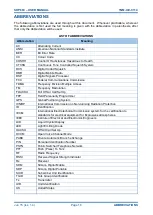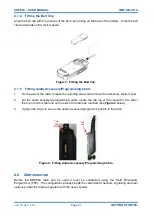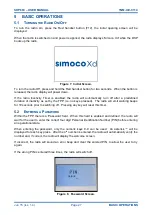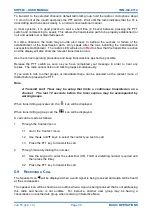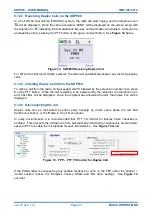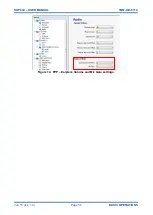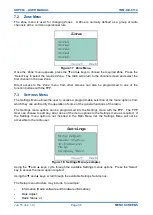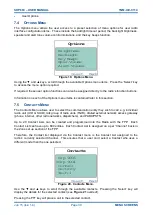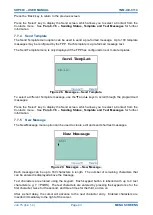
SDP660 – USER MANUAL
TNM-U-E-0114
Jun 15 (Iss. 1.4)
Page 29
BASIC OPERATIONS
Th
e FPP has a ‘Lock/Unlock’ enable function that can be assigned to a function button. If
this has been assigned, pressing the relevant function button will unlock the keypad.
The FPP also has an ‘Auto-Lock Keys’ option. When this is enabled, the keypad will locked
automatically if there are no valid key press within the preset time period (normally 10 s).
The KeyLock feature does not affect display messages and icons.
5.5
A
DJUSTING THE
V
OLUME
After turning the radio on, to adjust the volume, rotate the volume control knob clockwise to
increase it or anticlockwise to decrease it.
5.6
S
ELECTING A
Z
ONE
The radio supports up to 40 zones, each with a maximum of 100 channels.
Channels per zone should be dynamically allocated, i.e. flexible mix of zone sizes up to the total
channel capacity. For example, of the 2000 channels, there may be eight zones of 250 channels.
Another configuration may have 40 zones of 50 channels.
A zone can be selected by any of the following methods:
1
By menu selection.
Access the ‘Zone’ menu and use the ▲/▼keys to select the desired zone.
2
By using the function keys.
In the FPP, the functions ‘Zone Select Up’ and ‘Zone Select Down’ can be assigned to
function buttons. The desired zone can quickly be selected by pressing the relevant
programmed button.
5.7
S
ELECTING A
C
HANNEL
A channel can be selected by any of the following methods:
1
By menu selection.
Access the ‘Channel’ menu and use the ▲/▼keys to select the desired channel.
2
By using the function keys.
In the FPP, the functions ‘Channel Up’ and ‘Channel Down’ can be assigned to function
buttons. The desired Channel can quickly be selected by pressing the relevant programmed
button.
5.8
M
AKING A
C
ALL
Select the Zone/Channel required on which to make the call.
To avoid interfering with other users of the channel, listen first to ensure no other transmissions are
occurring, or check that the speaker icon is not present.
If the speaker icon is shown, there are transmissions present on the channel and the user should
not transmit. If required, the radio may be programmed to prevent transmission on a busy channel.


